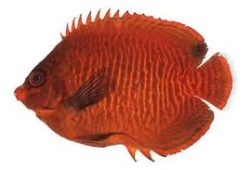Crayfish In Your Aquarium
In the article I’m going to tell you about Crayfish In Your Aquarium. Crayfish are crustaceans that look much like small lobsters or large shrimp and come from freshwater streams and rivers around the world. They can make very good inhabitants for the aquarium, but they do have special requirements that must be met. In particular, they require aerated water, space, are often aggressive, and will eat small tankmates.

Because they come from running water, they require well-aerated water. This means they should have a filter or at least an air stone, and may well enjoy filtration that produces a strong current.
Crayfish are good at escaping, and tanks for them should have a tight-fitting lid that they cannot get out of. They typically get to the top of the tank by climbing up any equipment that extends to the top of or out of the tank. Hiding places are important in order to make the crayfish feel secure, and there should be more hiding places than crayfish in a given tank in order to reduce fighting. Crayfish like to burrow and will rearrange tank decorations if the decorations are light enough. They also eats live plants, so try not to get too attached to any decorating scheme or plant you put in their aquarium.
They are are best kept one to a tank, as they are likely to fight with each other. Some may also be kept in male-female pairs, which is necessary if you want to breed them. There are also a couple of very small species in the genus Cambarellus that can be kept in groups if sufficient hiding places are given. Like Bettas, crayfish are sometimes used in animal behavior labs to demonstrate aggressive behavior – in both species the animals cannot actually get at each other. The behaviors are observed as they threaten each other through the glass.
Crayfish are larger than most other invertebrates commonly kept in aquaria and large adults will need considerable space. Ten gallons is enough for an adult of most of the North American species, but some of the Australian species can reach 16 inches and would need a 30 gallon or larger tank. There are a few dwarf species such as the Dwarf Cajun Crayfish, and Mexican Orange Dwarf Crayfish, that can be kept in a smaller fish tank or in a group in a 10 gallon tank if there are enough hiding places.
Crayfish will eat fish if the fish are small enough, so tank mates need to be considered very carefully. Slow-moving species of fish are likely to get their fins damaged even if they do not get caught. The dwarf crayfish species can be kept with fish, but keeping them with very tiny fish or fry is probably not safe, and they should not be kept with large fish because the fish may eat them.
Crayfish can be fed on shrimp pellets or flakes, but there are often specialty crayfish foods available and many crayfish enjoy vegetables such as zucchini or peas. If you live in a soft water area, you may wish to add calcium to their water, as this nutrient is important for growing a healthy exoskeleton. Molting crayfish will eat their discarded exoskeleton to recover the nutrients, so this is often left in the tank. Temperature requirements vary, but many species are happier in cooler water than the standard tropical tank.
Some Interesting Crayfish Species:
Procambarus alleni “electric blue”, Florida blue lobster
6-8 in, typical needs for a crayfish.
Procambarus sp. “Marble”
This species has no males. The offspring are clones of the parent. More mundanely, it grows to about 4 inches in length and has typical requirements.
Cambarellus patzcuarensis Mexican orange dwarf crayfish
Thi species is tiny, at 1 to 1 1/2 inches in length. If it can be kept was small fish, but not with large fish as the fish may eat this crayfish. Many individuals can be kept in the 10 gallon tank so long as there are hiding places. It can stand warmer water, being comfortable in 60-82F.
Cambarellus schufeldtii Dwarf Cajun Crayfish
Very similar to the Mexican Orange Dwarf.
Cherax tenuimanus “Blue Marron”
This species grows large at 10 to 16 inches in length and requires a larger tank of 20 to 30 gallons. It likes temperatures of 60 to 72 Fahrenheit, and care is otherwise as for most crayfish.



